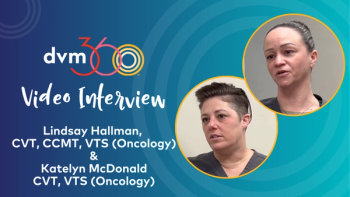
Rural equine docs: Get to the chopper!
Oh that's right. You don't have a helicopter. But there is someone who could could chop away at your duties and increase efficiencya midlevel practitioner. Is it time to consider an answer out of human healthcare's playbook?
Clustering visits to clients in close proximity can't prevent those days when what you really need is a practice helicopter. One solution: the midlevel veterinary practitioner designation. (Shutterstock.com)While the economy in the veterinary industry has largely rebounded-at least in my neck of the woods-it's still an open question as to whether the ambulatory equine-only practitioner will be able to survive outside more densely populated areas.
Why? Because travel time-between large pieces of property and far-flung pockets of development-eats into profitability. If veterinarians charged the same rate for travel time that they did for professional time, many clients might decide that the closest veterinarian was the best veterinarian.
Of course, proper scheduling is a big help-clustering visits to clients in close proximity on the same day. Unfortunately, even the best efforts can't prevent those days when what you really need is a practice helicopter. Furthermore, as the quality of medicine we provide continues to rise, so does the cost of equipment necessary to offer that level of care. In many cases, the only way this equipment can pay for itself is if it's used more frequently than a rural practitioner could ever manage.
What's the solution? Maybe it's time for veterinary medicine to explore a midlevel practitioner designation.
Bring in the middleman (or middlewoman)
Human medicine has nurse practitioners and physician assistants, both designed to take some of the burden off physicians. Veterinary medicine may be served by something similar yet different.
Currently, veterinary technicians
There's no reason why our industry can't create a new distinction, expand the existing technician role or, better yet, embrace the growing veterinary technician speciality (VTS) distinctions with some expanded responsibilities. More education, different education or specific training could help equine veterinary professionals build a model more similar to human healthcare.
Think of the efficiency!
Many state practice acts draw a fine line between the technician's ability to measure and record findings and the ability to diagnose. In many, many conditions, that line exists as an administrative distinction only. Either a veterinarian or a technician can measure elevated breathing, nasal discharge and ocular discharge and observe the cough the client has been seeing for days. Deciding what to prescribe is another matter, but that could be done remotely by a conversation between the technician and the veterinarian.
I'm not advocating for the existing technician guidelines to be expanded to that of a midlevel practitioner-though that argument could be made. But a new designation that required more initial education and continuing education could enhance equine practices' efficiency, profitability and medical care offerings.
Think about a day when there are six challenging visits already scheduled, and suddenly Mrs. Jones (who lives in the opposite direction) needs someone to vaccinate her horse and look at a skin mass. Is the industry better served by making that veterinarian cover an entire county in one day, or could a midlevel practitioner visit Mrs. Jones, administer the vaccine, examine the mass, take a detailed history and perhaps take an aspirate? When we talk about the shrinking pool of equine-only veterinarians graduating, or worse, the rising number of equine-only associates who move on to mixed-animal or companion-animal-only practice because of time and money problems, this is one small option that could help.
Do we all need one of everything?
To take the concept a step further, when 10 different veterinarians cover a huge rural area, is it plausible for each of them to own a top-level ultrasound unit and digital radiography system? Many of the practitioners I talk to would love to be able to refer clients to a practitioner solely focused on imaging without risking the loss of a client.
A midlevel practitioner could help fill this need.
After one of those 10 veterinarians saw a horse that required radiographs, he or she could simply refer to that midlevel practitioner for imaging. The veterinarian would be free to move on to her next call, while the imaging midlevel practitioner would schedule the horse-along with referrals from any of the other nine veterinarians in the area. It's a much more efficient use of time and money. The radiographs would be sent electronically to the referring veterinarian, who would then make a diagnosis and prescribe treatment. The same scenario could work for ultrasounds, although those require more interpretation in the moment. In either situation, sedation could be called for, which means the midlevel practitioner would need the ability to administer those medications.
Let's start bulldozing these roadblocks
In some ways, human healthcare is way ahead of us-and this is one of them. If human doctors can coexist with a medical staff that occupies various levels of training and authority, why can't we?
Should a midlevel practitioner have the ability to prescribe? That's a complicated issue and needs more discussion-but I don't believe it's out of the question. After all, those responsibilities are an inetgral part of the human nurse practitioner and physician assistant positions.
I don't doubt that this concept of the midlevel practitioner is potentially divisive (as seems to be the case with any big change), but that doesn't mean it's without merit. Many good ideas start to evolve and grow once the first few roadblocks are overcome. It may be time to start this conversation and evolution toward a new structure that can add value to an already amazing industry.
Kyle Palmer, CVT, is a Firstline Editorial Advisory Board member and a practice manager at Silver Creek Animal Clinic in Silverton, Ore. Please send your questions or comments to
Newsletter
From exam room tips to practice management insights, get trusted veterinary news delivered straight to your inbox—subscribe to dvm360.




